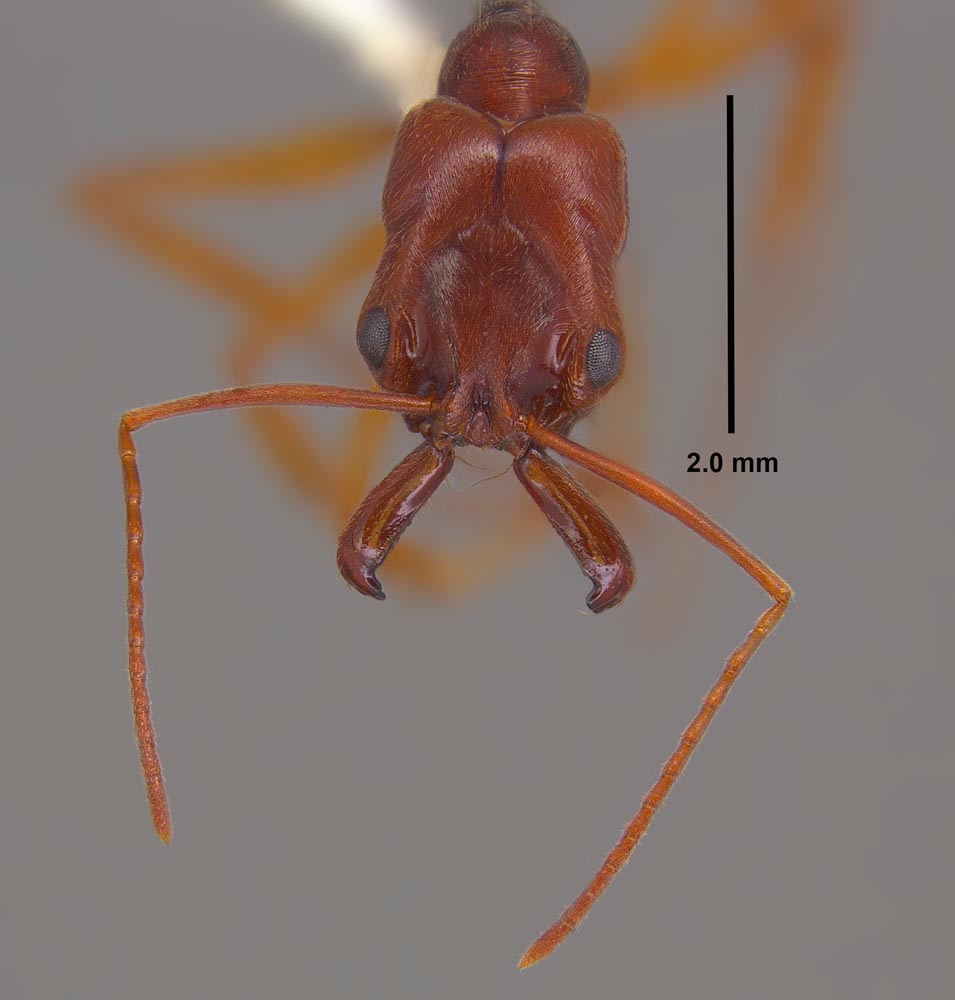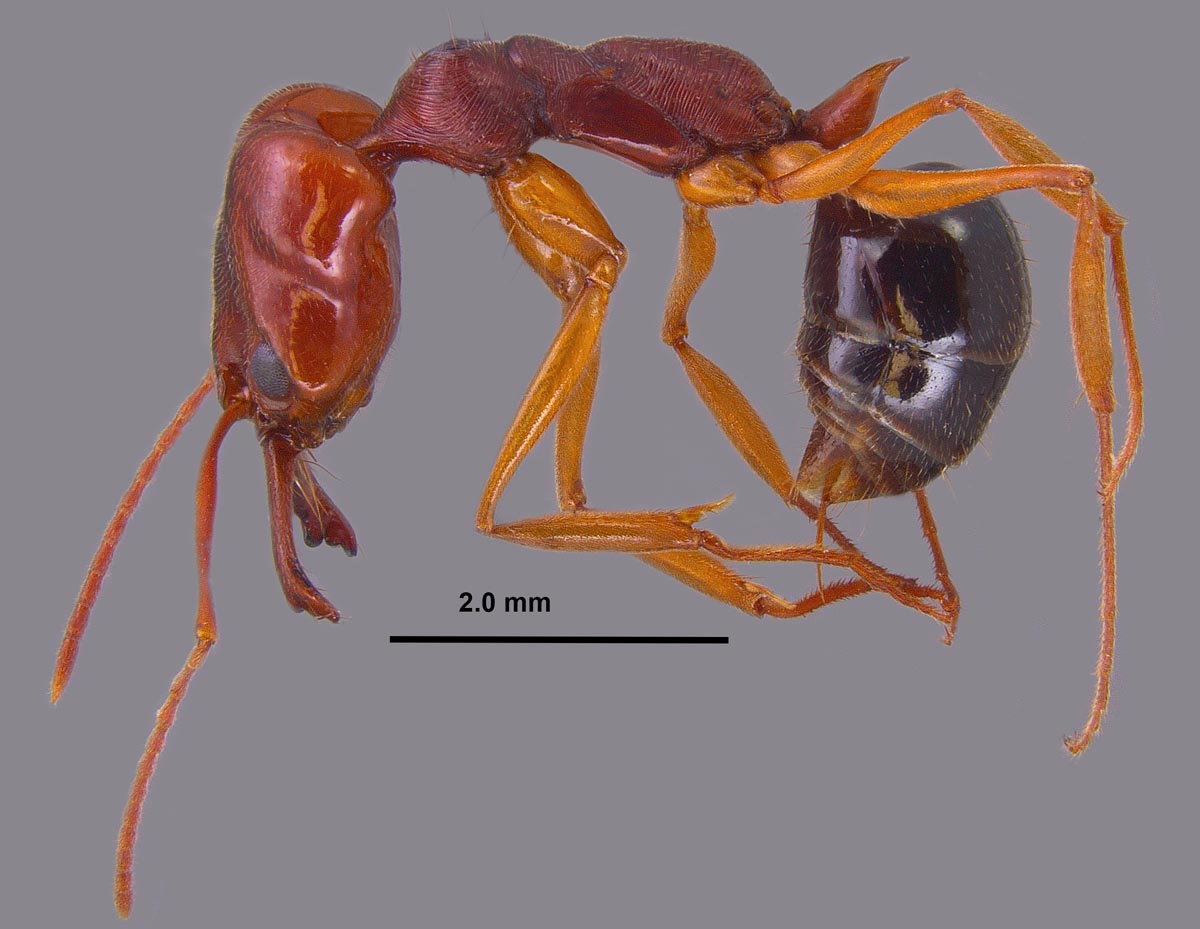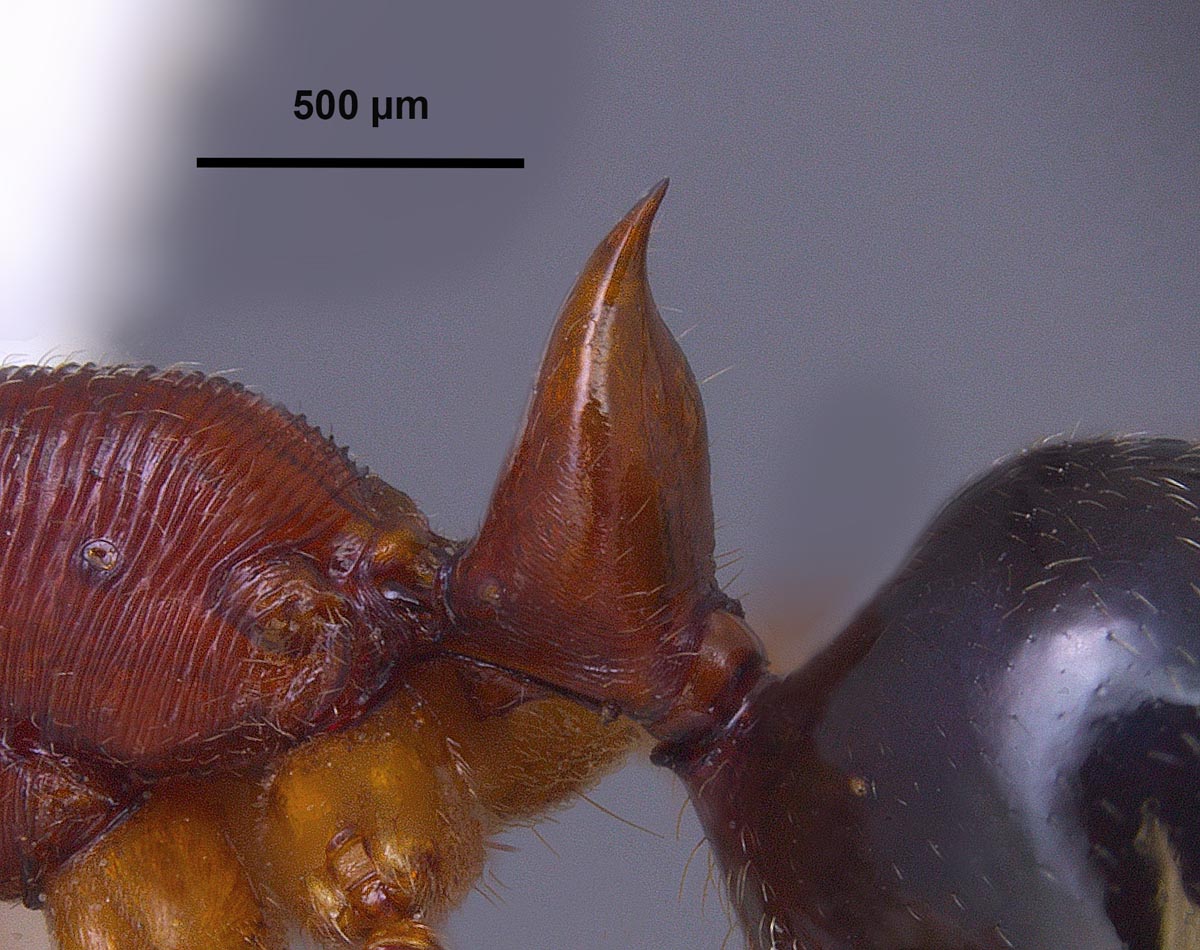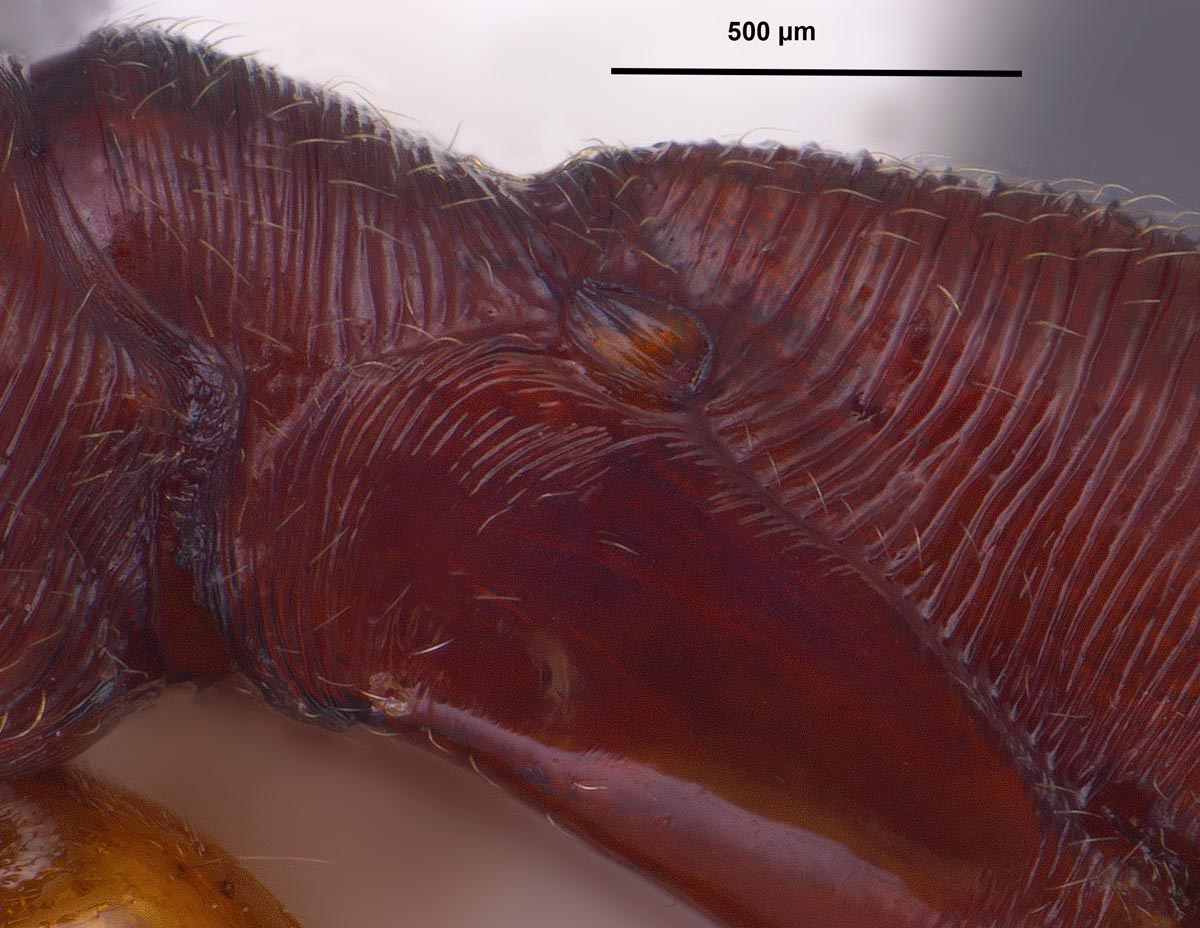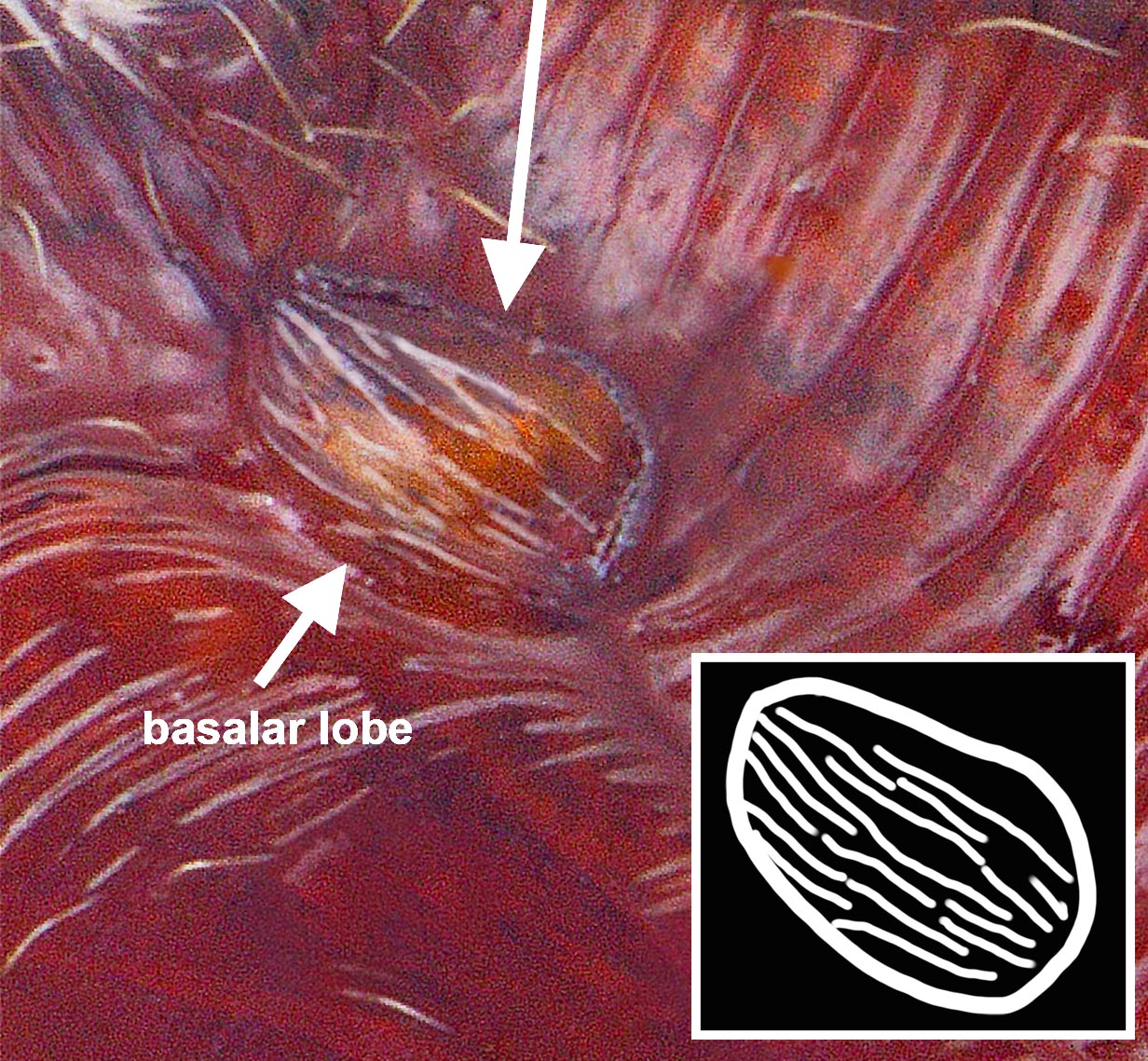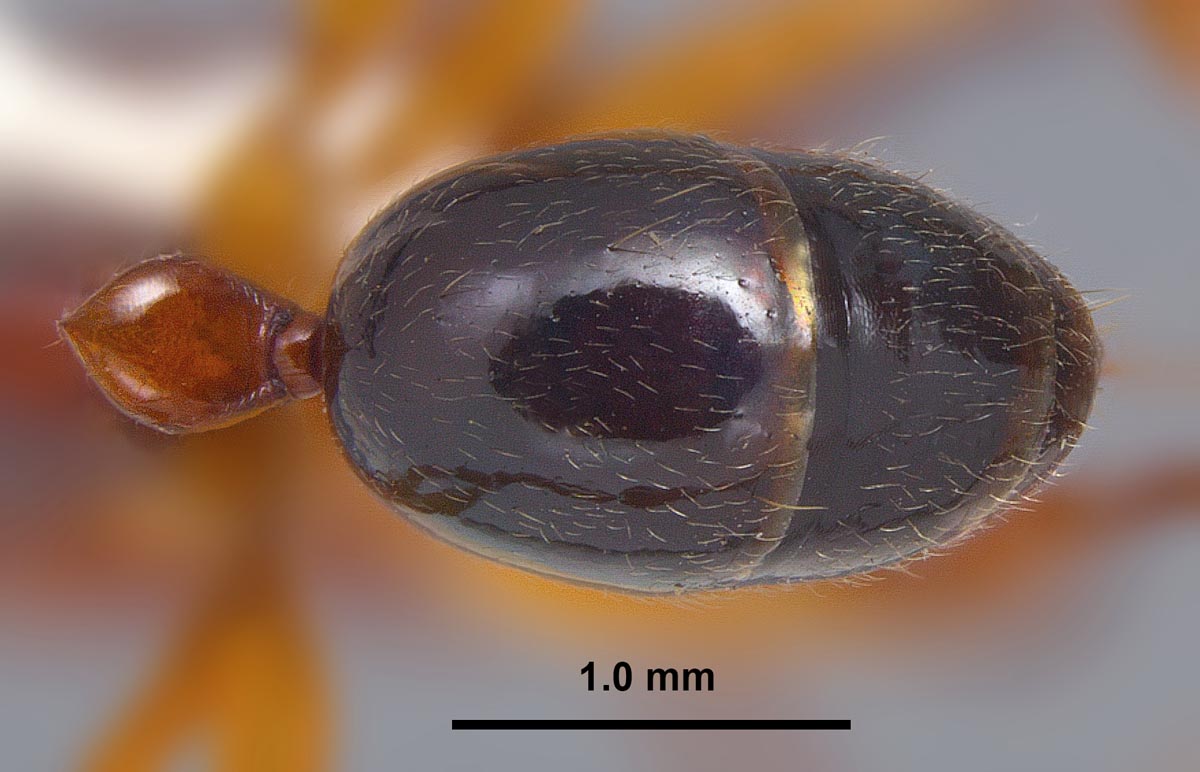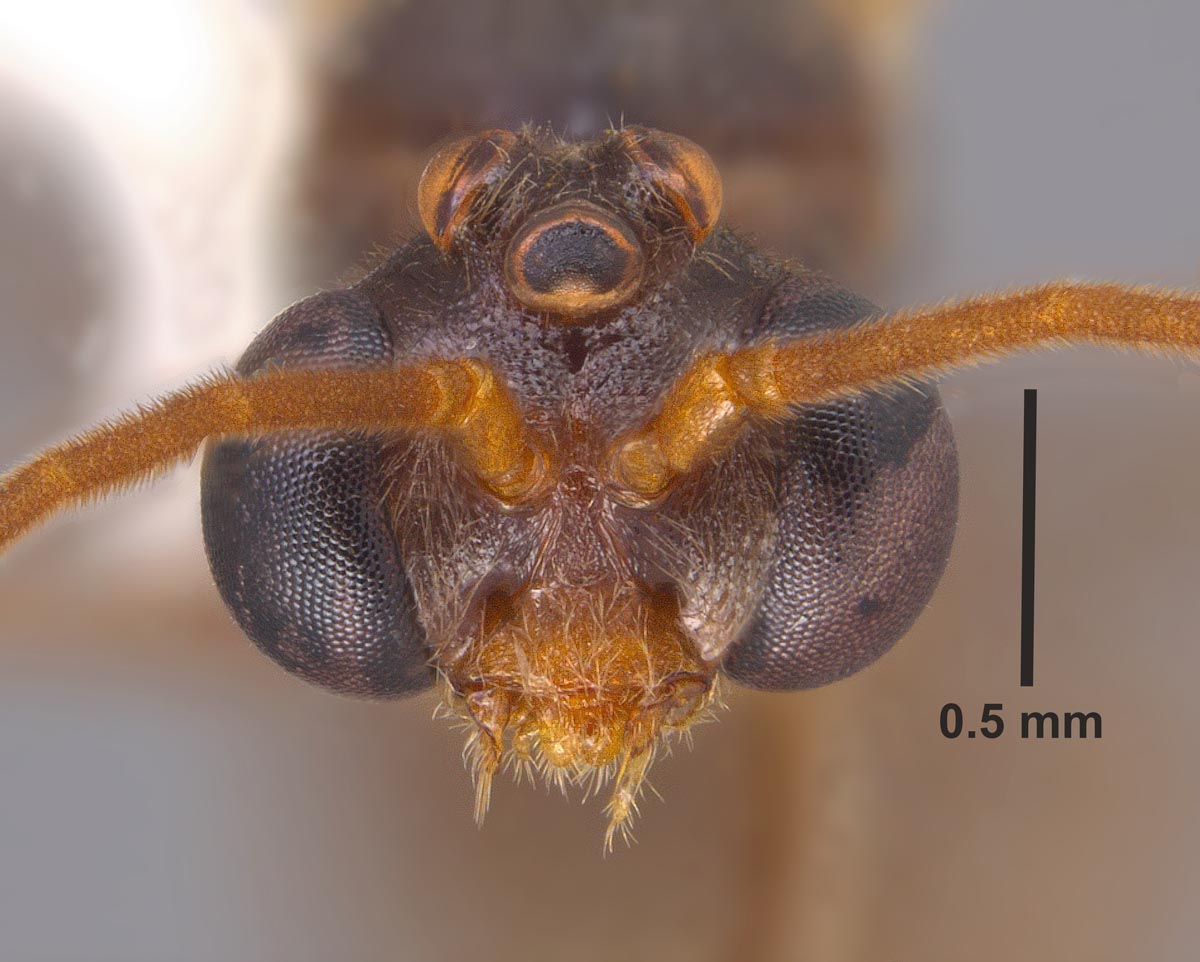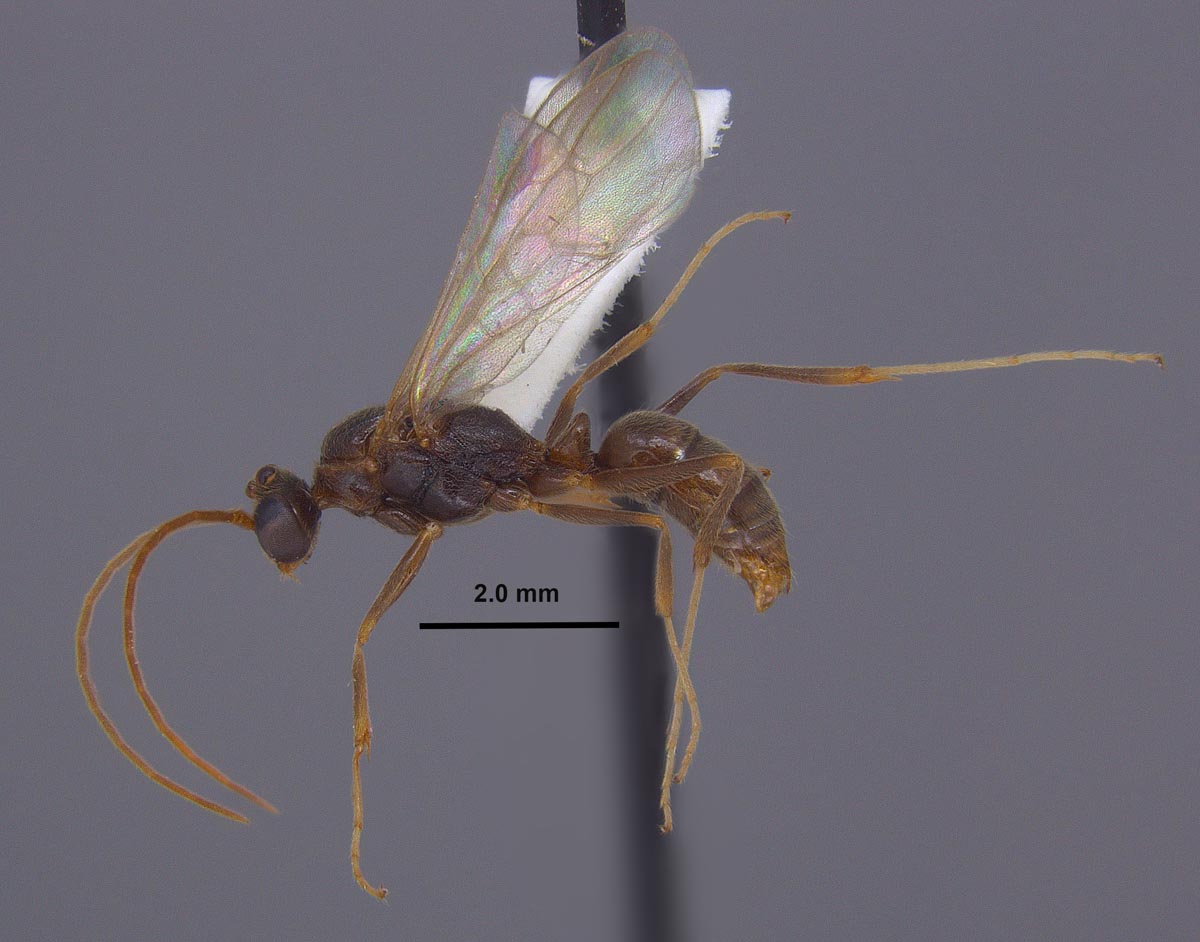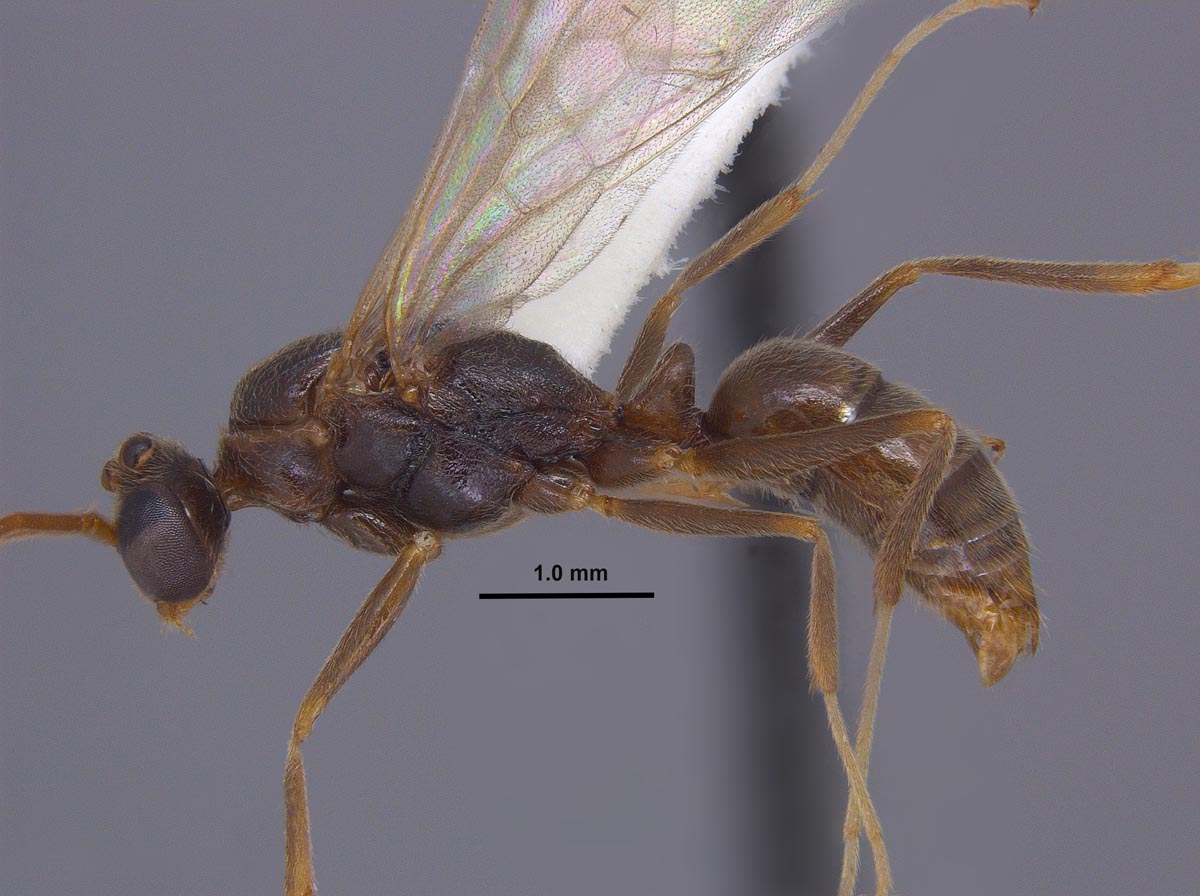Introduction
Ants in this genus differ from other ponerine ants found in the United States by the unique head shape; peculiar mandibles, which are elongate and inserted near the center of the clypeus (see photo above); the large tapering petiole; and the large size of the workers (for a more detailed diagnosis of the genus, see MacGown et al. 2014). Members of this genus are commonly called trap-jaw ants due to their elongate mandibles, which can be opened to 180°, then snapped rapidly together on prey. These ants are amazing in their ability to control and time the mandibular movement. When necessary, an ant can forcibly close the mandibles against a surface or other organism and actually propel itself away for up to several inches! Remarkable behavior. Additionally, they can use the mandibles for much more sensitive movements such as caring for larvae or nest building.
Odontomachus relictus is endemic to sand ridges in central Florida.
Taxonomic History (provided by Barry Bolton, 2012)
Described as Odontomachus relictus Deyrup and Cover, 2004.
Identification
Worker: HL 2.00–2.06, HW 1.68–1.80, SL 1.94, EL 0.30–0.40, ML 1.20, WL 2.67–2.68, PTH 0.90, PTL 0.44–0.52 (one MEM specimen measured, other measurements from Deyrup and Cover 2004). Entire body generally shiny except where dulled by dense pubescence; head, mesosoma, and petiole reddish-brown, legs yellowish-brown, and gaster blackish. Head with fine, longitudinal striae covering much of the head in full-face view, striae beginning from frontal lobes and diverging toward posterior corners of head, fading at corners and sides; sides and underside of head lacking sculpture; with numerous, fine, appressed pubescence and scattered elongate erect setae present dorsally. Pronotum with somewhat circular concentric striae that become longitudinal posteriorly, then transverse at posterior margin; appressed pubescence abundant; 5–6 elongate, erect setae present. Mesonotum and propodeum with deep transverse striae; with abundant pubescence present dorsally. Propleuron mostly lacking sculpture, smooth and shiny; mesopleuron with longitudinal striae at dorsal and ventral margins, otherwise smooth and shiny; pubescence mostly lacking. Basalar lobe with coarse striate sculpture. Metasternum lacking paired elongate, spiniform processes between hind coxae. Petiole widest at base, gradually tapering apically to a short spine directed rearward; mostly lacking striae with only faint striae present near base; subpetiolar process rounded triangular; appressed pubescence present anteriorly and laterally, but mostly absent posteriorly. Gaster mostly shiny beneath pubescence, lacking striae or other strong sculpture, but with fine coriaceous sculpture (seen at high magnification); fine, appressed pubescence sparse, spaces between hairs more than the length of a hair; scattered erect, elongate setae present.
Male: HL 0.98–1.07, HW 1.30–1.45, SL 0.22–0.24, EL 0.76, EW 0.50, OL 0.22–0.23, OES 0.13, WL 2.43–2.50, PTH 0.64–0.70, PTL 0.44–0.47, FWL 4.95–5.00 (two MEM specimens measured, other measurements from Deyrup and Cover 2004). Body generally shiny except where obscured by dense pubescence; head and mesosoma brownish-black, petiole and gaster dark reddish-brown to brownish-black, femora and tibiae dark brown, tarsi pale yellowish-brown, and antennae yellowish-brown and contrasting with the dark head. Head, meso- and metasoma with abundant whitish subdecumbent pubescence. Eyes extremely large, maximum diameter of each eye at least 70% of the length of the head in full-face view. Ocelli large, length of each ocellus greater than distance between lateral ocellus and eye margin; in full-face view, lateral ocelli protrude beyond posterior border of head. Mesosoma: pronotum lacking sculpture; mesoscutum with fine transversely arcuate striae anteriorly, striae becoming longitudinal posteriorly; mesoscutellum convex, shiny, with longitudinal striae; propodeum long and low without a declivious posterior face, with fine striae in concentric ovals medially, transversely bisinuate posteriorly, and longitudinal laterally. Mesopleuron with weak to slightly strong transverse striae. Petiole bluntly rounded apically, with rounded triangular subpetiolar process anteriorly; densely pubescent anteriorly and laterally, with reduced pubescence posteriorly.
Queen: HL 2.15, HW 1.77, EL 0.27, ML 1.20, PTL 0.52, WL 2.75 (measurements from Deyrup and Cover 2004, one individual measured). Structure and color similar to worker, but with presence of ocelli and expanded mesosoma (for flight); pronotum with transverse striae; and mesonotum with longitudinal striae.
Odontomachus relictus is similar to O. clarus, but endemic to Florida; O. relictus has never been reported from west of the Mississippi river.Workers are most similar to O. clarus, butmay be separated by the striate basalar lobes (Fig. 5A). Workers are further separated from other Nearctic species by the following combination: 1) gastric pubescence sparse; 2) basalar lobes striate; and 3) petiolar node lacking conspicuous, transverse striae. Males are uniquely identified by the following combination: 1) body and head dark brown, antennae yellowish-brown; 2) very large, strongly bulging ocelli, and 3) longitudinally striate mesoscutum.
Biology and Economic Importance
Similar to other members of this subfamily, Odontomachus workers have a prominent sting(er), and have the ability to inflict a relatively painful sting. This species has been observed to nest in the ground at the base of oak bushes and is often found in places with at least some leaf litter cover. Due to specific habitat preferences or microclimatological needs, O. relictus may be threatened by human development and disturbance. This species is predominately nocturnal. Male flight activity peaks conspicuously during July through October, apparently correlated with moonlight (see Deyrup et al. 1985).
This species nests in deep sand in scrub type habitat in sand ridges in south-central Florida.
Distribution
Only known to occur in south-central peninsular FL (Citrus, Highlands, Polk, and Orange Counties).
Literature Cited
Bolton, B. 2012. Bolton World Catalog Ants. accessed on October 2012. [Available online: http://www.antweb.org/world.jsp]
Deyrup, M. and S. Cover. 2004. A new species of Odontomachus ant (Hymenoptera: Formicidae) from inland ridges of Florida, with a key to Odontomachus of the United States. Florida Entomologist 87: 136-144.
MacGown, J. A., B. Boudinot, M. Deyrup, and D. M. Sorger. 2014. A review of the Nearctic Odontomachus (Hymenoptera: Formicidae: Ponerinae) with a treatment of the males. Zootaxa 3802 (4):515–552.
Links
AntWeb Images


